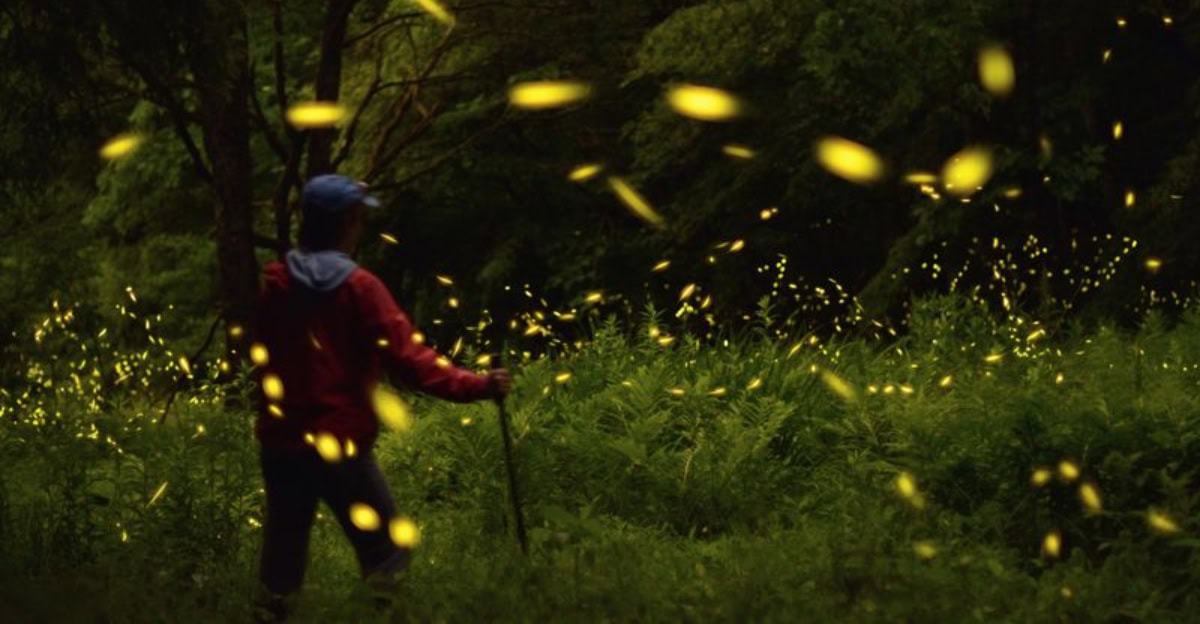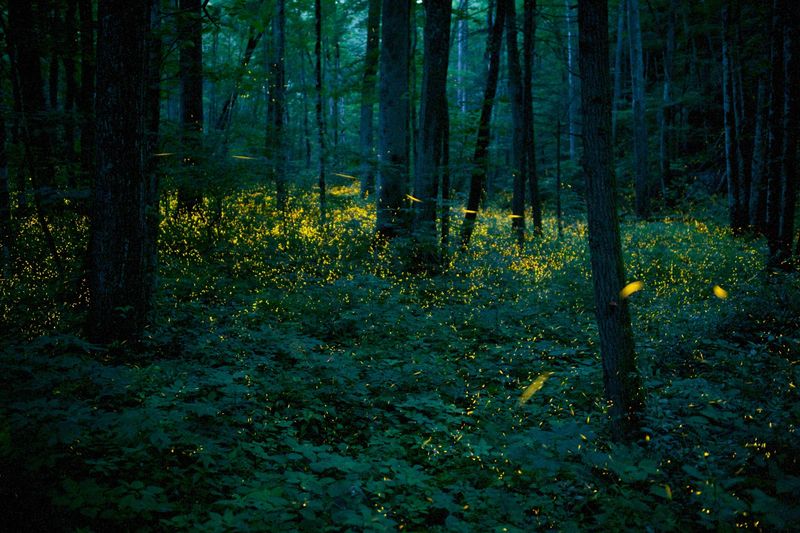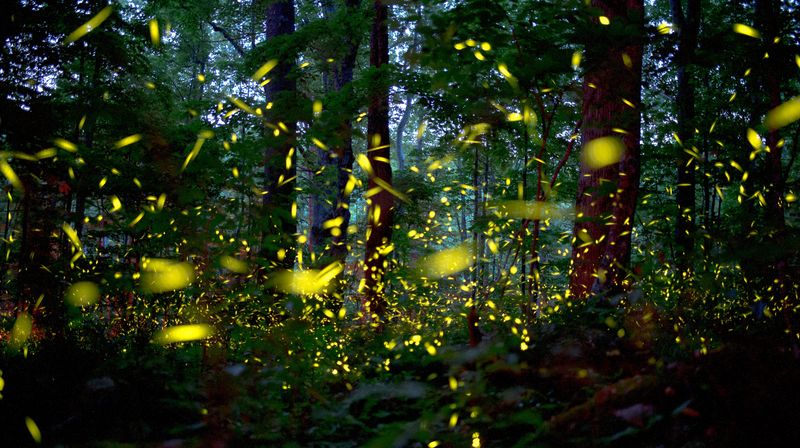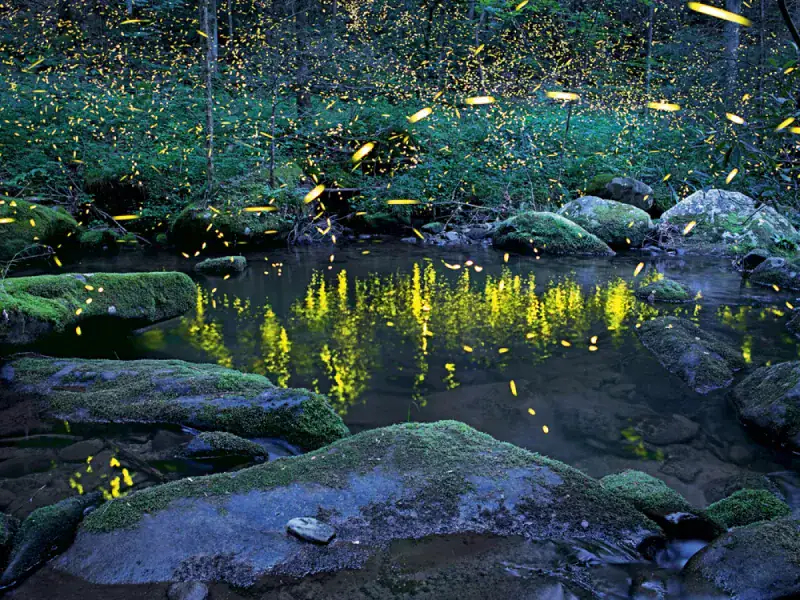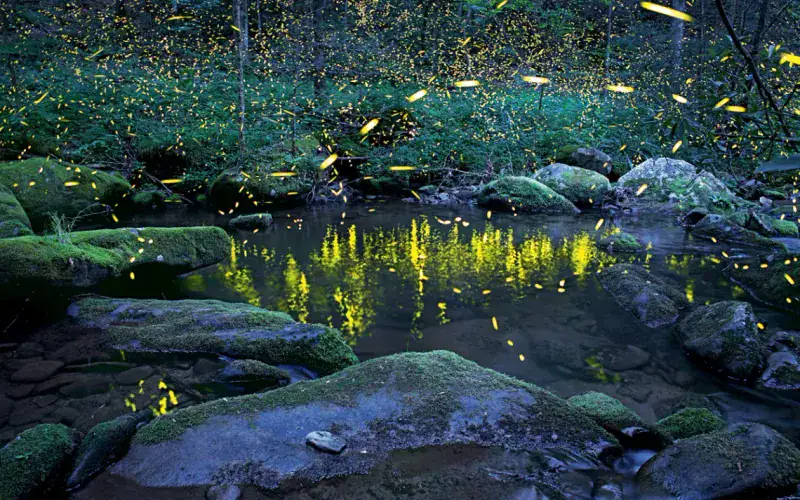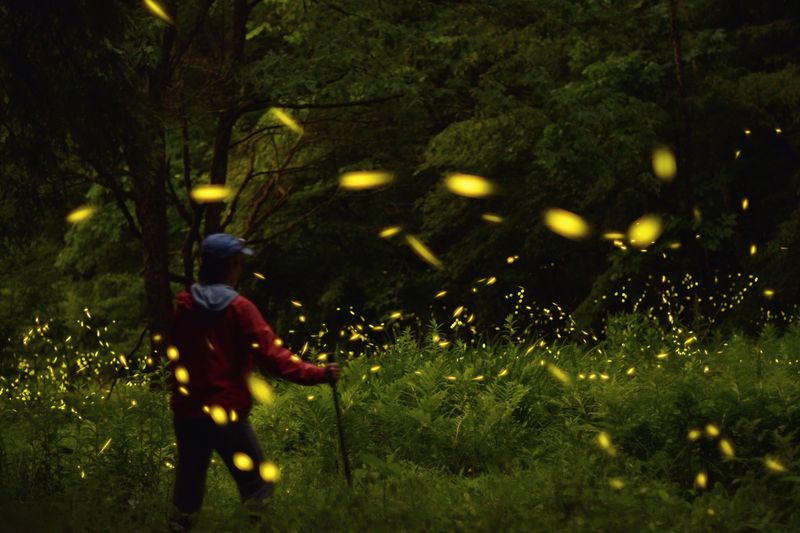Hidden in the misty valleys of the Great Smoky Mountains lies Elkmont, a magical spot where nature puts on one of its most spectacular light shows. Every late spring, thousands of fireflies flash their lanterns in perfect harmony, creating waves of light that pulse through the dark forest. This rare natural phenomenon draws visitors from around the world to witness the enchanting display that transforms an ordinary woodland into a fairytale landscape.
Nature’s Light Orchestra
As darkness falls over Elkmont’s ancient forests, the first few blinking lights appear like scattered stars. Then suddenly—magic happens! Thousands of fireflies begin to flash in unison, creating rippling waves of golden light that sweep through the trees.
These special insects, scientifically known as Photinus carolinus, are one of only a few firefly species worldwide that can synchronize their flashing patterns. The males hover just above the forest floor, lighting up together for about 6 seconds, followed by about 8 seconds of darkness.
The effect resembles Christmas lights with a shared switch—all turning on, then off, in perfect rhythm. Standing amid this living light display feels like being inside a natural cathedral where the walls themselves pulse with gentle, ethereal radiance.
The Science Behind the Synchrony
What makes these tiny beetles flash in unison? The answer lies in their romantic pursuits. Male fireflies synchronize their flashing to stand out collectively to the females watching from the forest floor.
Each male can adjust his flash timing based on his neighbors’ signals. Scientists believe this creates a ripple effect—like audience members in a stadium doing the wave. When a female spots a male whose pattern she likes, she responds with a single flash during the dark period, signaling her interest.
Research suggests that temperature affects the timing of these displays. Warmer evenings speed up the insects’ metabolism, causing faster flash rates. The phenomenon exemplifies emergent behavior—where individual actions create complex group patterns without any leader orchestrating the show.
The Perfect Time and Place
Timing is everything for witnessing this rare spectacle. The synchronous display typically occurs for just 2-3 weeks between late May and mid-June, when the fireflies enter their brief mating season. Peak viewing usually falls during the first week of June, though Mother Nature doesn’t follow strict calendars.
Elkmont’s unique geography creates ideal conditions for these special insects. The humid valley with its dense, old-growth forest provides perfect breeding grounds. Mild temperatures, abundant leaf litter for larvae, and minimal light pollution all contribute to the thriving firefly population.
The historic Elkmont area, once a logging community and later a vacation retreat, now sits abandoned—its decaying cabins adding a haunting backdrop to the light show that transforms the forest each summer night.
Viewing Tips and Access Lottery
Witnessing this natural wonder requires planning. The National Park Service implements a lottery system for vehicle passes during the 8-day viewing period. Only about 1,000 visitors per night receive access to protect both the experience and the fireflies themselves.
Lucky lottery winners should arrive prepared. Bring folding chairs, red cellophane to cover flashlights (white light disrupts the fireflies’ display), and plenty of patience. Rangers lead visitors to designated viewing areas along the Little River Trail, where the display typically begins around 9:30 PM.
The forest transforms as darkness deepens. First, a few random flashes appear, then gradually more join in until thousands pulse in perfect rhythm. Visitors report feelings of childlike wonder watching this silent symphony of light unfold in the ancient forest.
Conservation Challenges and Future Prospects
The fireflies face growing threats despite their protected habitat. Light pollution from nearby Gatlinburg and Pigeon Forge increasingly encroaches on their dark sanctuary. Climate change alters the timing of spring emergence, potentially disrupting the precise conditions needed for synchronization.
Visitor impact remains another concern. Even with strict management, thousands of humans trampling through the habitat each year affects the delicate forest floor where firefly larvae develop. Scientists work closely with park officials to monitor population trends and adjust viewing protocols accordingly.
Conservation efforts focus on preserving not just the fireflies but their entire ecosystem. The continued existence of this mesmerizing display depends on maintaining the perfect balance of darkness, humidity, and undisturbed forest that makes Elkmont a beacon for both fireflies and the humans who travel far to witness their luminous dance.
